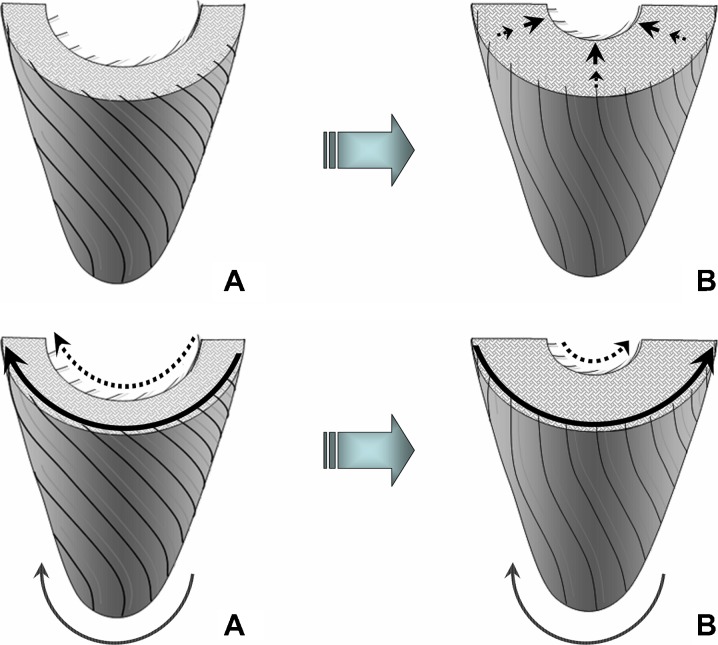Fig. 6.
Schematic representation of radial and rotational LV motions during systole: (A) beginning of systole and (B) mid systole. The endocardial points are expected to travel a higher distance per time unit during their radial motion due to concomitant changes in LV wall thickness (upper panel), while the epicardial points are expected to travel a higher distance per time unit during their circumferential motion due to a higher rotational orbit (lower panel). This may explain the higher systolic and diastolic radial velocities, but slightly lower rotational velocities for the endocardial compared to epicardial layer noted in both age groups (Tables 1 and 3). Of note is that at the beginning of systole, the entire LV rotates counter-clockwise as viewed from the apex (A, lower panel). Subsequently, the LV apex continues its counter-clockwise motion, while the LV base rotates in an opposite (clockwise) direction, resulting in LV twisting (B, lower panel)

